Inverse Function/Transformation
 Fatima Jannet
Fatima JannetSince these are basic school-level math concepts, I won't go into detail. I will simply show how they are used in data science. Thank you!
Inverse Function
An inverse of a function is a function that reverses the effect of the original function.
If you have a function f that maps an element x from set X to an element y in a set Y, the inverse function f^(-1) map y back to x.
Given a function f: X → Y, then inverse function f^(-1): y → x
The inverse function f^(-1) satisfies the following condition:
for all x∈X: f(f^-1(y)) = y
for all y∈Y: f^-1(f(x)) = x
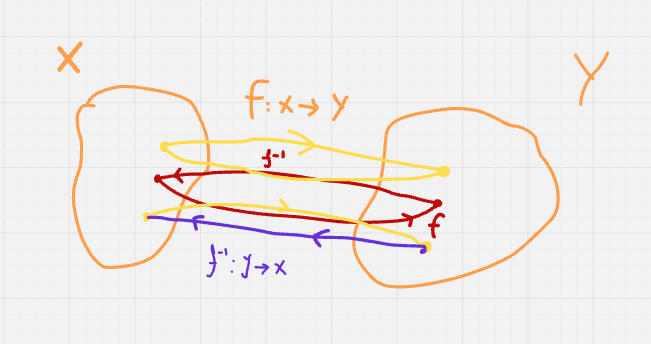
These conditions imply that applying the function and then it inverses will return the origin one.
Identity function:
I: X → x => I(a) = a
Properties of identity function:
Preservation: The identity function does not change any element. You will get the same element after performing the dot product. If x is in the domain, then the image of x under the identity function is x itself.
Linearity: The identity function is a linear transformation.
I(u + v) = I(u) + I(v)
I(cu) = cI(u) = cu
Identity matrix: An n x n matrix where all the diagonal elements are 1, and all other elements are 0.
Inverse: The identity function is its own inverse. A function f has an inverse if and only if it is bijective.
Injective (one-to-one): Different elements in the domain map to different elements in the codomain.
Surjective (onto): Every element in the codomain is the image of at least one element in the domain.
Find the inverse: y = 2x+3 for x:
y = 2x+3
y-3 = 2x
x = (y-3)/2
The inverse function, f-1(y) = (y-3)/2
Verification:

Application of function and inverse function
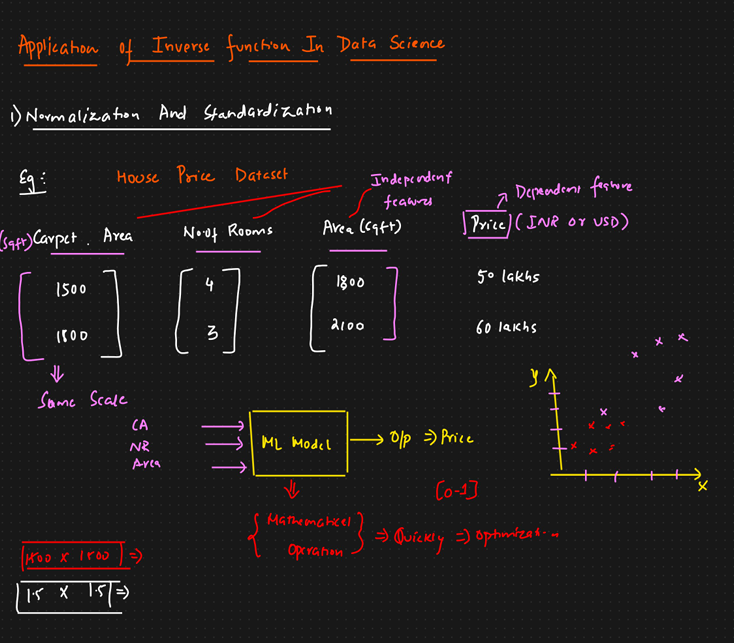
Standardization:
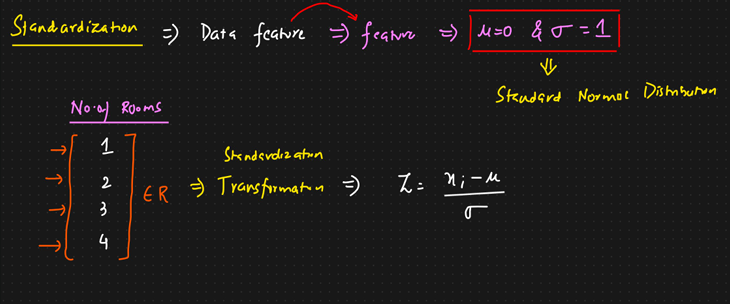
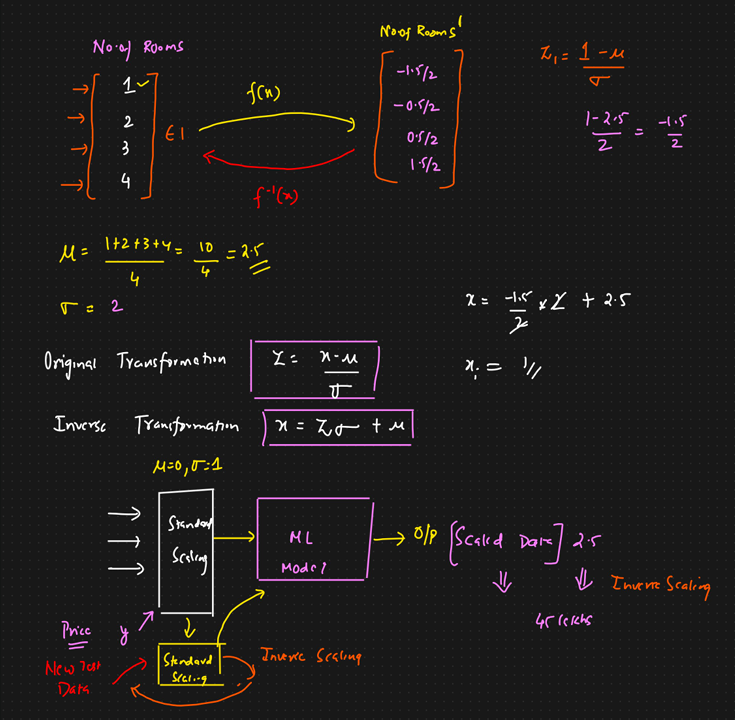
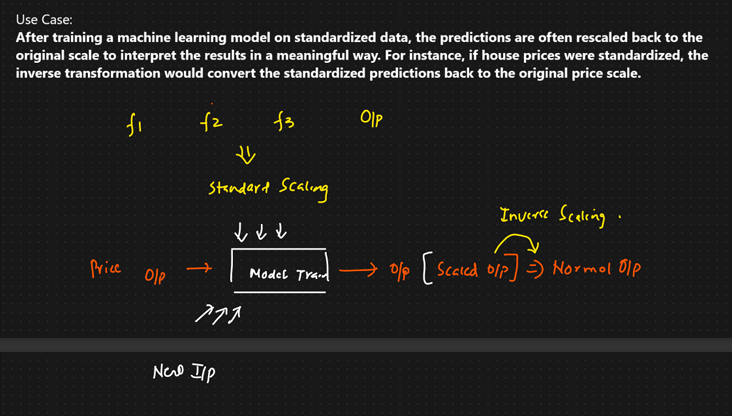
Normalization:
- min(x) checks for the x features
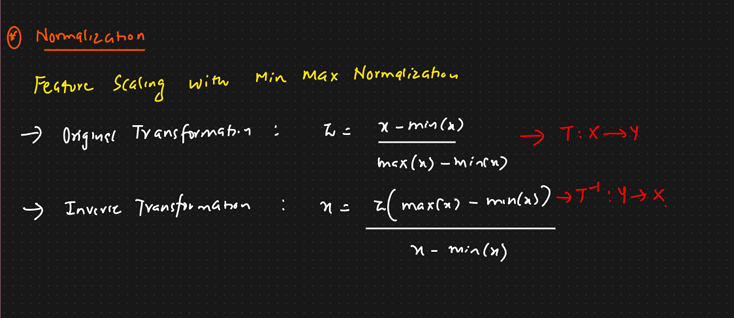
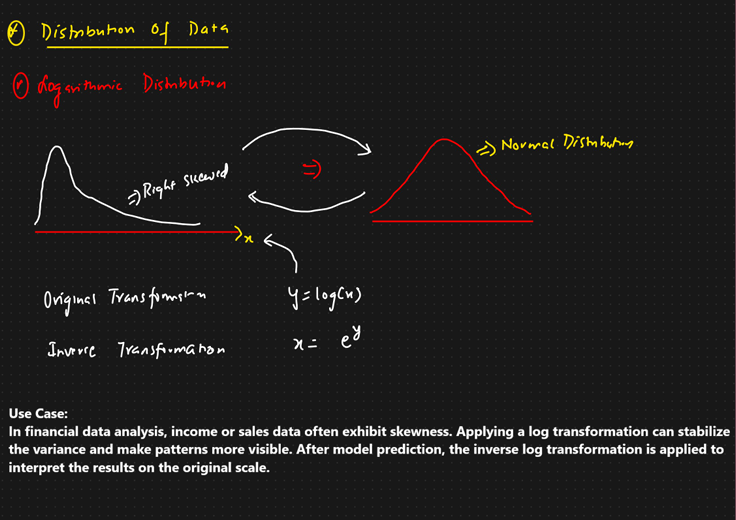
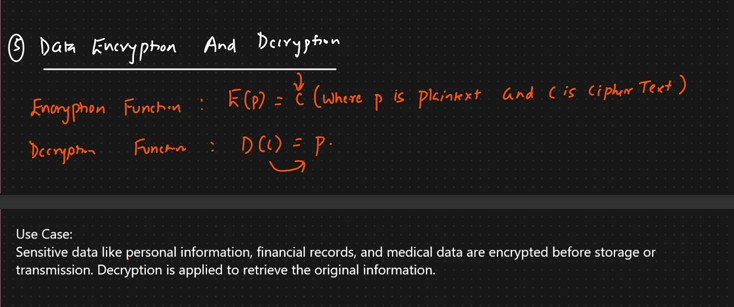
How to find inverse of a matrix
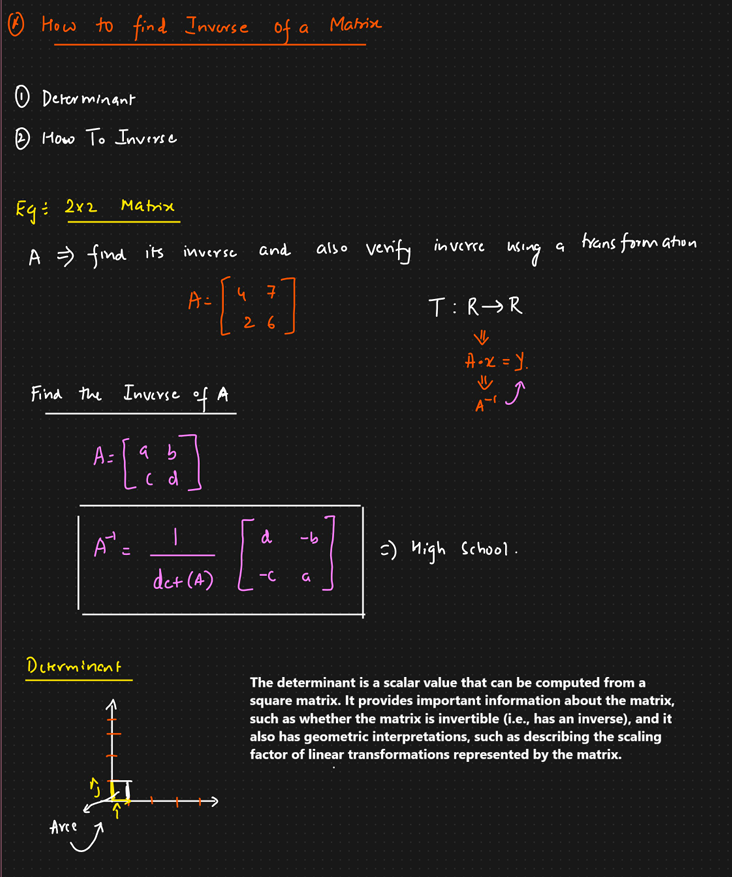
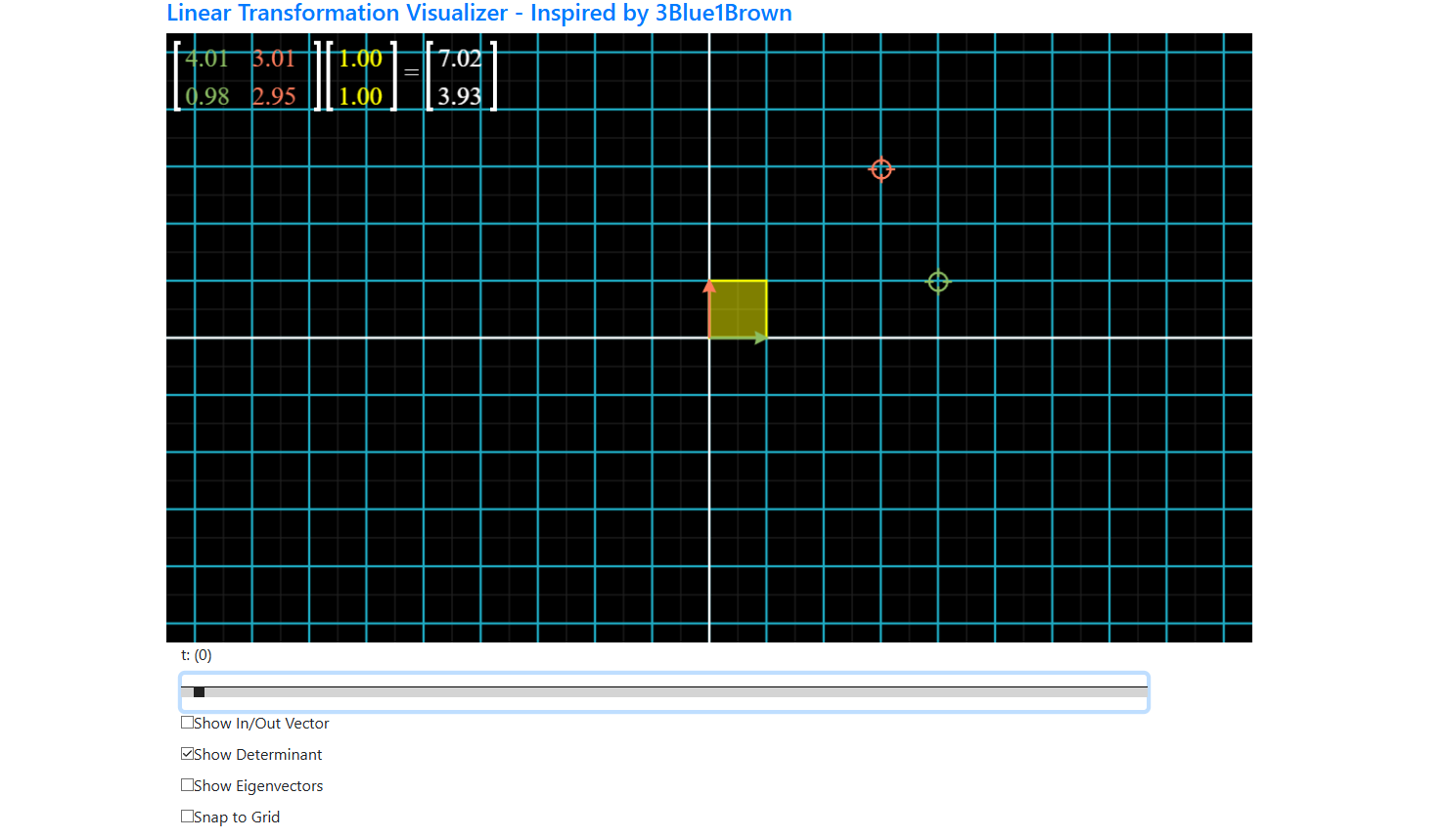
When we scale these unit vectors to the red and green points, the entire unit vector will scale to that point. Linear transformation is all about this: if I have a specific point and want to transform it to another vector, scaling will keep my origin the same, but the lines will stretch until they reach that particular point.
Now - what does determinant actual mean?
Look at the below shaded area. This area has been created after scaling. This is called a linear transformation itself. I hope you are able to understand that the determinant is basically the shaded linear transformed area.
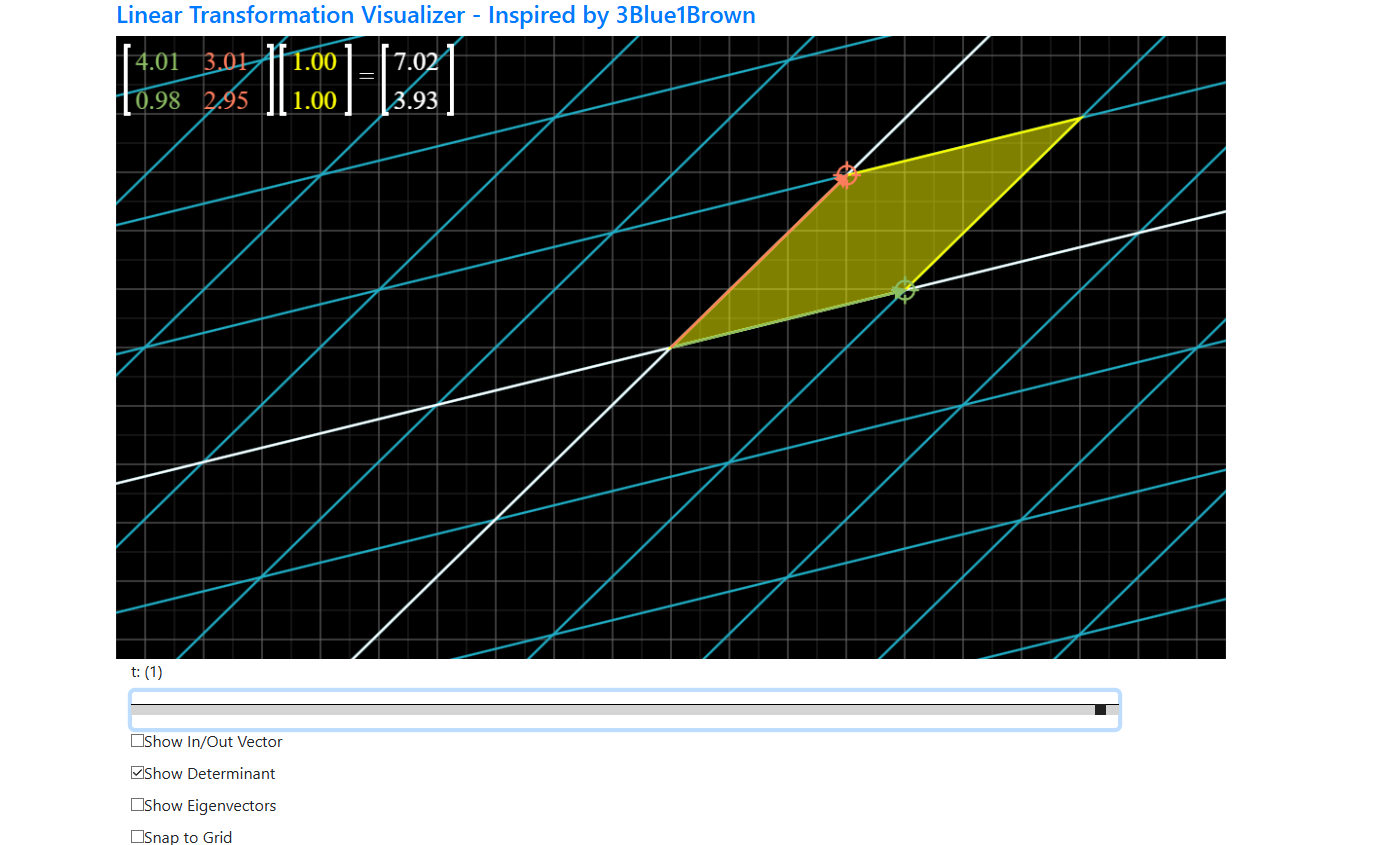
Now we will find the inverse of A
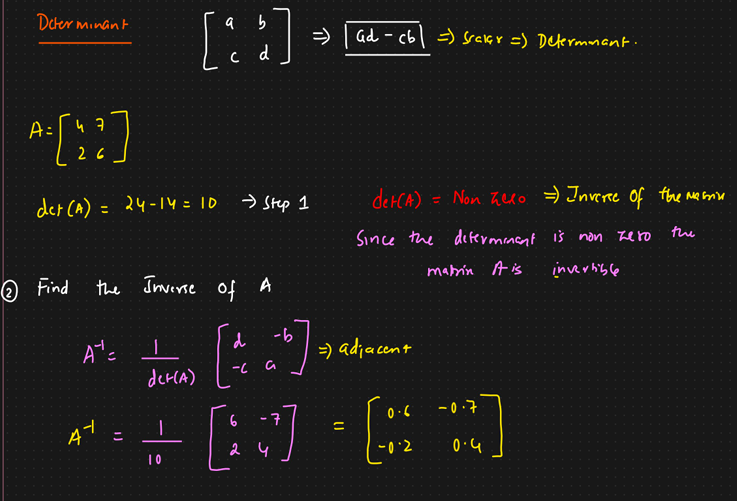
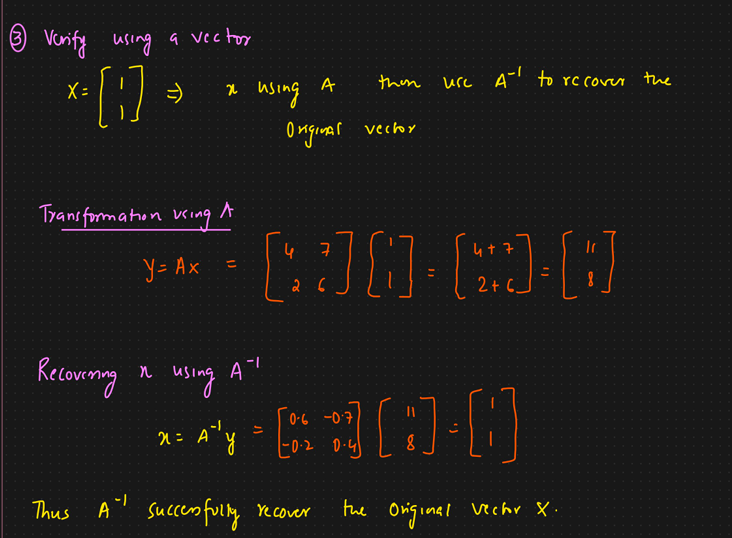
This is it!
Subscribe to my newsletter
Read articles from Fatima Jannet directly inside your inbox. Subscribe to the newsletter, and don't miss out.
Written by
